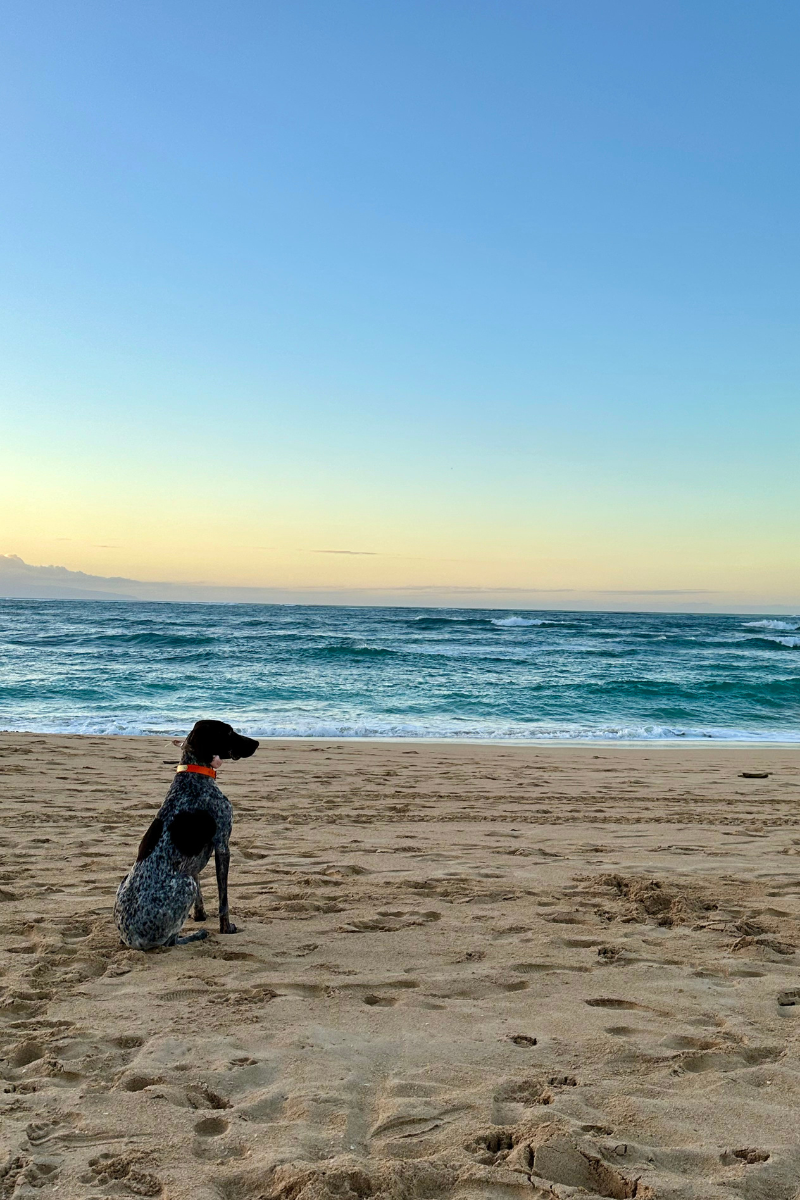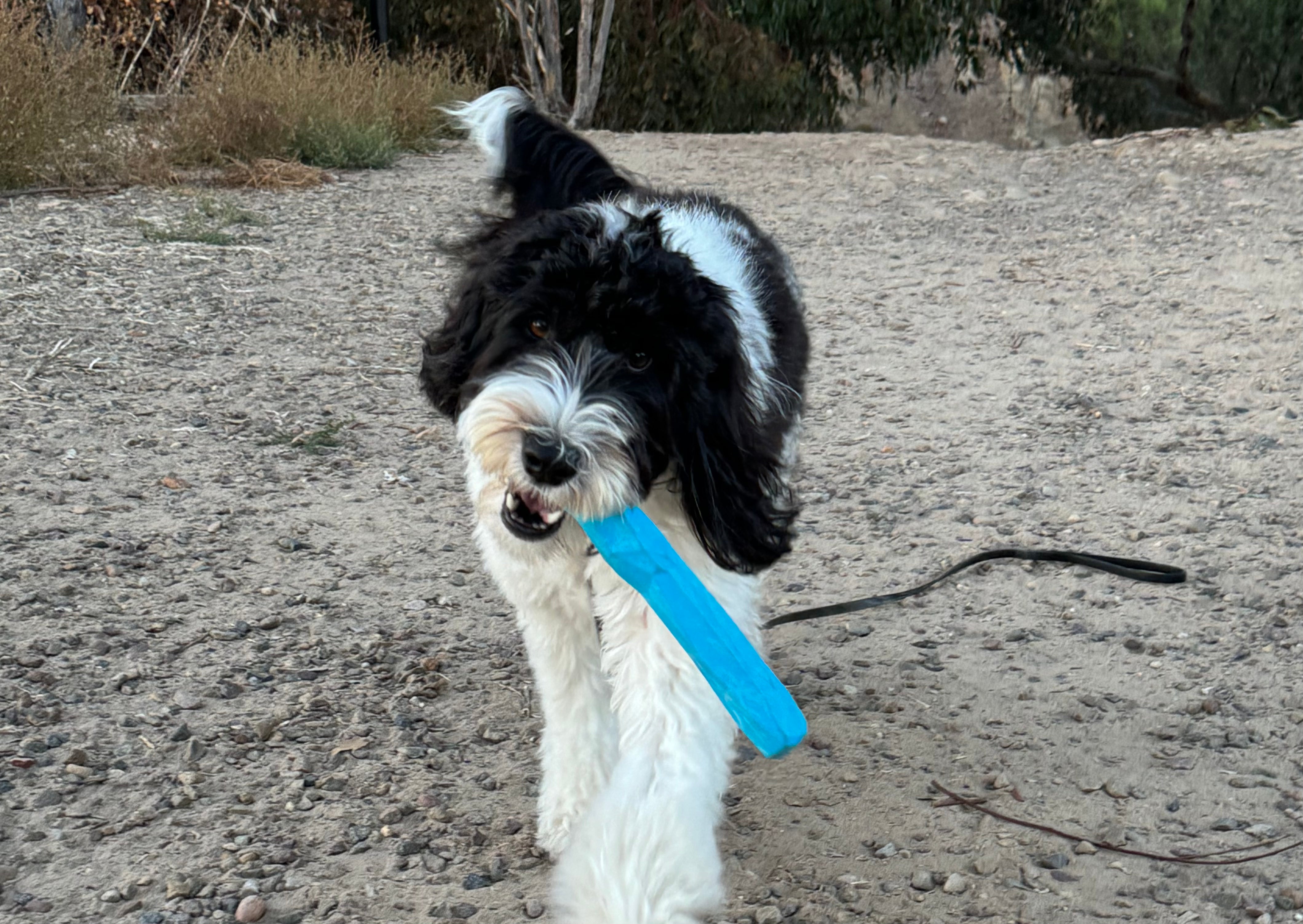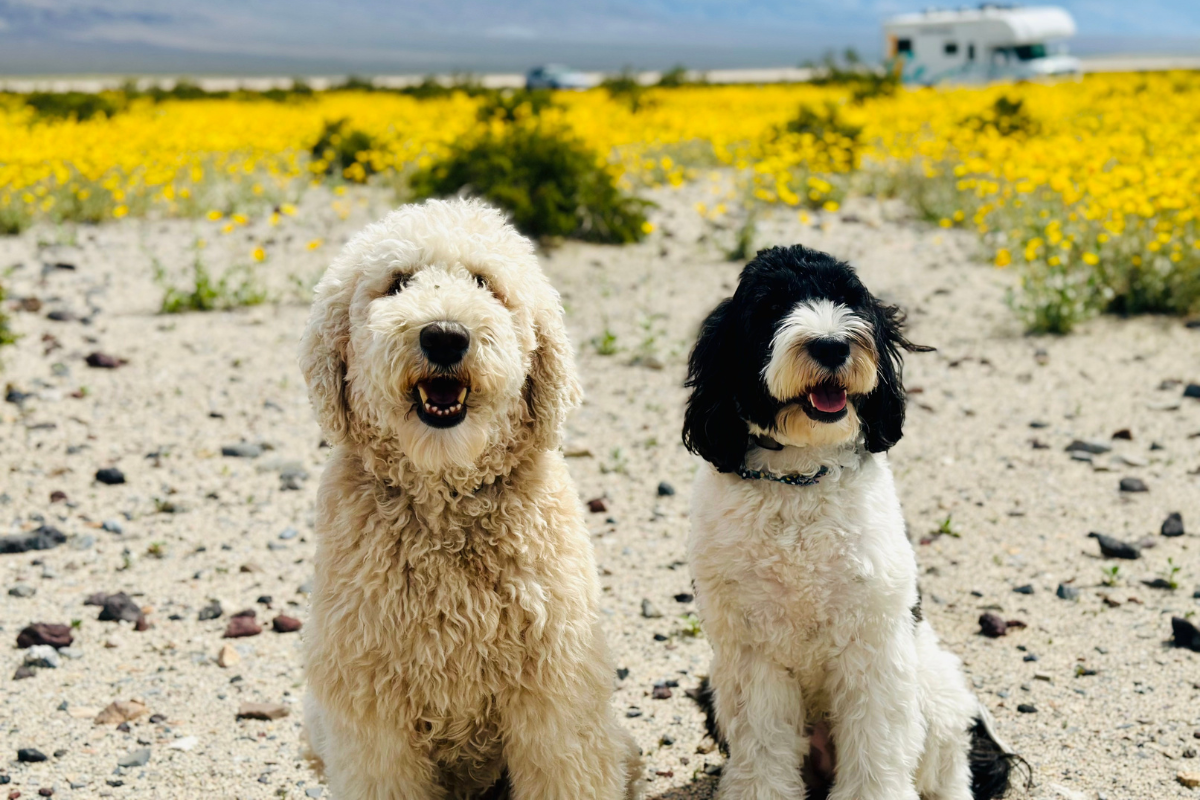How to Minimize Your Carbon Pawprint
I love this planet.
And I love exploring it — especially with my dog, Luna. From hiking in desert mountains and playing in foamy waves, to camping in damp, dense forests, the outdoors has so much beauty and wonder to offer.
But in an ever-changing climate, I want to make sure we’re responsible stewards by being mindful of our impact during adventures. While dogs are great companions to take along with us, they can negatively affect the environment if we don’t share responsibility in minimizing their impact.
Here are some things we can all do to protect and preserve the planet with our dogs.
6 Pet-Friendly Planet Preservation Tips
1. Stay on Designated Trails
Hiking is one of my favorite activities with my dog. In secluded areas, it’s tempting to let her run off-leash, but not sticking to designated trails can cause harm to fragile ecosystems and habitats.

Sticking to designated trails and cleared pathways ensures she doesn’t trample fragile vegetation, especially in sensitive ecosystems like wetlands or alpine areas. Also, it protects her from coming into contact with poisonous plants that she could potentially ingest. It’s a win-win for everyone.
2. Respect Wildlife
My best friend lives in Maui, Hawaii, and whenever I visit her, we take her dog Subi to an off-leash dog beach where green sea turtles occasionally emerge from the ocean to lay in the sand. I notice others either leash their pups around the turtles or re-direct their behavior so they stay at least 10 feet away from the species that’s federally protected.

For me, it’s a great reminder that wildlife is also having to adjust to a changing landscape where humans are encroaching more and more in their natural habitats. To prevent disturbing or causing extra stress to any wildlife, I keep my dog close in areas where I know other animals may be present.
3. Invest in Durable Pet Products
By opting for high-quality, long-lasting gear, you're not only minimizing the need for frequent replacements, but also decreasing the environmental impact associated with manufacturing and disposing of inferior products. From rugged leashes to toys made from upcycled and recycled materials, choosing durable options means less waste in landfills and fewer resources consumed over time.

4. Pack Out Waste
This may seem like a no-brainer, but no matter how remote in the wilderness I am, I always carry waste bags to pick up after my dog. Domesticated dog waste is different from other wildlife waste. Wild animals are consuming nutrients from the ecosystem, which when returned, benefits the ecosystem back by creating a closed loop. However, pet waste has different nutrients that contain excess nitrogen and phosphorus, and when those are added to the environment, harmful bacteria and parasites can contaminate water sources like lakes, streams, and rivers.
Across the United States, 83 million dogs produce 21.2 billion pounds of poop every year, and when it’s not disposed of properly, it can have a significant impact. Not only is it important to bag the waste, but it’s also vital to throw the baggie away in a trash bin instead of leaving it by the trail. I even like to buy non-plastic, compostable bags that disintegrate faster in landfills.
5. Know Before You Go
Whether I’m traveling to a National Park, a protected forest, or even just a nearby hike in my town, I research ahead of time any specific regulations or guidelines for hiking with dogs. Different parks and trails oftentimes have varying rules regarding leashes, and where pets are and aren’t allowed.

6. Minimize Noise
I love camping with my dog. There’s nothing better than having her snuggled up next to me in our tent. Sometimes though, being in a new environment or disrupting her routine can cause her to be more anxious and on high alert. While it's natural for dogs to bark (it is, afterall, one of the ways they communicate), excessive barking can cause noise pollution and disrupt the peace and quiet for other hikers, campers, and surrounding wildlife.
If you know that your dog barks excessively when they’re fearful or in a new situation, consider bringing familiar objects from home to ease their worries and maintain a tranquil environment for everyone.

By being an ambassador for responsible outdoor recreation, we can all work together to help preserve natural spaces for future generations and other furry adventurers.
Sources:
Leave No Trace


